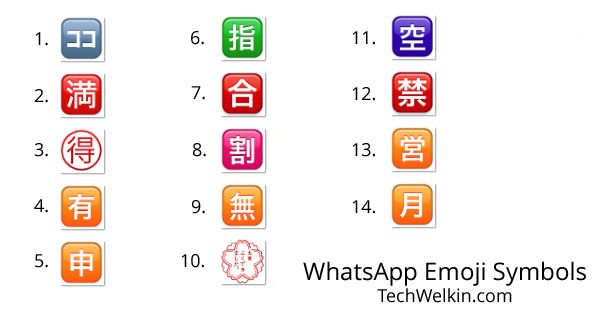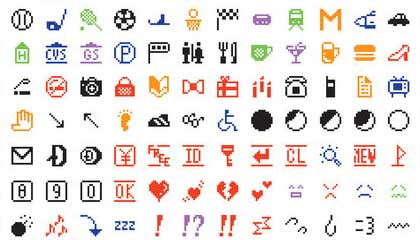Emojis have transformed the way we communicate, making digital conversations more expressive and nuanced. But if you’ve ever received an emoji from a Chinese friend and found yourself puzzled by its meaning, you’re not alone. While some emojis are universally understood, many take on entirely different meanings in Chinese digital culture. A simple number, an animal emoji, or a hand gesture could mean something completely unexpected.
Understanding these Chinese emoji meanings is essential if you want to communicate effectively and avoid misunderstandings. In this article, we’ll explore the fascinating hidden messages behind Chinese emojis, their cultural significance, and how to use them correctly.
What Are Chinese Emojis and How Are They Different?
Many people assume that emojis carry the same meaning everywhere. However, in China, emojis often have cultural, linguistic, or symbolic meanings that differ from their Western interpretations. Unlike in English-speaking countries, where emojis primarily express emotions, Chinese users often use them as coded messages, wordplay, or indirect expressions.
1. The Role of Emojis in Chinese Digital Communication
Chinese culture values implicit communication, where meanings are often suggested rather than directly stated. This has led to the development of unique emoji meanings that can replace entire phrases or convey emotions subtly.
📌 Key facts about Chinese emoji usage:
- Indirect Communication: Emojis help soften criticism, reject politely, or express sarcasm.
- Wordplay & Homophones: Some emojis represent words that sound similar in Mandarin.
- Memes & Internet Slang: Many emojis are linked to viral trends or internet culture in China.
For example, the 🙃 (upside-down face) emoji in Western culture may indicate sarcasm, but in China, it is often used as a subtle way to show disagreement or dissatisfaction without being confrontational.
Another striking example is the 😏 (smirking face) emoji, which in China can imply cunning, teasing, or even a passive-aggressive remark.
2. Why Do Chinese Users Prefer Unique Emoji Meanings?
The differences in emoji interpretation come from several cultural and linguistic factors:
✅ Phonetic Wordplay: Some emoji meanings are based on numbers or symbols that sound similar to words in Mandarin.
✅ Historical & Cultural Significance: Traditional beliefs influence the symbolism of certain emojis.
✅ Memes & Online Communities: Platforms like WeChat, Weibo, and Douyin (Chinese TikTok) shape emoji trends in China.
For example, the number 520, when typed in chat, means “I love you” because it sounds like “wǒ ài nǐ” in Mandarin. This logic extends to emojis, where users creatively assign meanings to certain symbols.
Common Chinese Emojis and Their Hidden Meanings
Understanding the true meanings behind Chinese emojis is crucial to avoid confusion. Here are some commonly used emojis and their unexpected interpretations in Chinese digital communication:
1. Numbers as Emojis: Hidden Codes in Chinese Texting
In China, numbers aren’t just numbers—they’re often used as coded messages in chats:
| Number | Emoji Representation | Meaning in Chinese Culture |
|---|---|---|
| 520 | ❤️ | “I love you” (sounds like “wǒ ài nǐ”) |
| 1314 | 💍 | “Forever” (symbolizes eternal love) |
| 666 | 👍 | “Awesome” or “cool” (gaming slang) |
| 88 | 👋 | “Goodbye” (sounds like “bā bā” or “bye-bye”) |
| 233 | 😂 | “Hahaha” (originated from online forums) |
💡 Example: A message saying “520 1314 ❤️” means “I love you forever.” This type of digital love language is extremely popular among young Chinese couples.
2. Hand Gestures and Their Unique Meanings
Many hand gesture emojis also carry different meanings in China:
| Emoji | Western Meaning | Chinese Interpretation |
|---|---|---|
| 🙏 | Prayer/Thank You | Represents Buddhist prayers or a sincere request |
| 👌 | Okay/Perfect | Can be sarcastic, meaning “whatever” |
| ✌️ | Peace/Victory | Often means “win” or success in China |
| 🤞 | Fingers Crossed | A wish for good luck, but sometimes a subtle romantic hint |
💡 Example: If a friend sends you an “OK” (👌) emoji in China, it might not mean agreement but rather a passive-aggressive way of saying “I don’t care”.
3. Animal Emojis and Their Symbolism
Animal emojis can hold significant cultural symbolism in China, often linked to Chinese zodiac signs, traditional folklore, or online slang.
| Emoji | Common Meaning | Chinese Interpretation |
|---|---|---|
| 🐷 | Pig | Cute, silly, or sometimes lazy |
| 🐼 | Panda | Symbol of China, often patriotic |
| 🦁 | Lion | Strength, leadership, or bravery |
| 🐍 | Snake | Cunning, deceitful, or sneaky behavior |
💡 Example: If someone calls you a 🐷 (pig) in a chat, it could either be an affectionate joke (like saying “you’re adorable”) or a playful insult meaning “lazy.”
4. Heart Emojis: Love, Friendship, and Respect
Not all heart emojis represent love. In Chinese culture, different colored hearts carry specific meanings:
| Emoji | Meaning |
|---|---|
| ❤️ | True love, romance, or deep affection |
| 💛 | Friendship, warmth, and loyalty |
| 💚 | Jealousy or, in some cases, infidelity |
| 💙 | Trust, calmness, and reliability |
| 💔 | Sarcasm (not always about actual heartbreak) |
💡 Example: If someone sends you a 💚 (green heart), it could be a joking reference to unfaithfulness, stemming from the slang “戴绿帽子” (“wearing a green hat”), which in China implies a cheating partner.
The Influence of Chinese Culture on Emoji Meanings
Throughout history, Chinese culture has emphasized symbolism, indirect communication, and visual storytelling—all of which have influenced how emojis are used today. Many emoji meanings are deeply rooted in traditional beliefs, superstitions, and philosophical principles, making them far more than just simple icons.
1. Confucianism and Symbolic Communication
One of the most influential philosophies in Chinese culture is Confucianism, which promotes harmony, respect, and indirect expression. This belief system has shaped how Chinese people communicate, often favoring subtlety over direct confrontation.
How does this relate to emojis?
- Avoidance of direct confrontation: Instead of outright rejecting something, a smiling face emoji 😊 or an upside-down face 🙃 may be used to express disagreement in a polite way.
- Showing respect: The folded hands emoji 🙏 is often used to convey gratitude, respect, or even apologies in line with Confucian values.
- Emphasizing social roles: In professional settings, emojis are used conservatively, often with neutral expressions or formal symbols to maintain proper etiquette.
2. Lunar New Year Emojis and Their Significance
Festivals play a crucial role in Chinese culture, and emojis associated with these celebrations carry special meanings. During the Lunar New Year, several emojis are commonly used to convey good wishes:
| Emoji | Meaning in Chinese Culture | Common Usage |
|---|---|---|
| 🧧 | Red Envelope (Hóngbāo) | Symbol of prosperity and good luck |
| 🎉 | Party Popper | Celebration and new beginnings |
| 🐉 | Dragon | Strength, success, and power |
| 🍊 | Tangerine or Orange | Wealth and fortune (used in greetings) |
💡 Example: If someone sends you “🧧🎉🐉” during the Lunar New Year, they are wishing you wealth, happiness, and a successful year ahead. These emojis act as digital good luck charms, preserving centuries-old traditions in modern online conversations.
How to Use Chinese Emojis Correctly
Emojis are powerful tools for digital expression, but using them incorrectly can lead to confusion—or worse, offense. Understanding when, where, and how to use Chinese emojis correctly can help you communicate more effectively.
1. Context Matters: When to Use or Avoid Certain Emojis
The meaning of an emoji can change drastically depending on the context. What may seem harmless in one setting could be inappropriate in another.
| Emoji | Use with Caution | Why? |
|---|---|---|
| 🤔 | Questioning authority | Can seem disrespectful in a work-related discussion |
| 😂 | Excessive use in serious situations | Might be interpreted as sarcasm or indifference |
| 💚 | Expressing love | Could be mistaken as a joke about infidelity |
💡 Example: If a colleague sends a 🤔 emoji after a boss’s suggestion, it might be perceived as doubt or disagreement, even if the intention was to express curiosity.
2. Common Mistakes Foreigners Make with Chinese Emojis
Using emojis in China without understanding their meanings can lead to awkward misunderstandings. Here are some common mistakes foreigners should avoid:
- Using 😏 (smirking face) in a flirty way – In China, this emoji often carries a negative connotation of mockery or arrogance rather than flirtation.
- Sending 💚 (green heart) to express love – The color green in relationships suggests infidelity, making it an inappropriate choice for romantic messages.
- Overusing 😂 (laughing emoji) in serious discussions – Unlike in Western cultures, where it can soften tension, in China, it may come off as mocking or dismissive.
🔍 Case Study: In 2018, a well-known international brand made the mistake of using emojis incorrectly in a Chinese marketing campaign. They placed a green heart 💚 next to a romantic slogan, unintentionally implying unfaithfulness. Chinese consumers immediately noticed the mistake, leading to negative press and damage control efforts by the company.
Conclusion: Mastering the Art of Chinese Emojis
Emojis in Chinese digital culture are far more than just decorative symbols; they are a language of their own, deeply influenced by history, philosophy, and contemporary internet trends.
Key Takeaways:
✔ Chinese emojis often have deeper meanings, shaped by cultural traditions and linguistic wordplay.
✔ Numbers, animals, and hand gestures can convey hidden messages that differ from Western interpretations.
✔ Context is crucial—using the wrong emoji in a professional setting or misinterpreting a symbol can lead to awkward situations.
✔ Avoid common mistakes, such as assuming global meanings apply to Chinese emojis without considering their unique cultural significance.
At FEC Vietnam (fecvietnam.edu.vn), we specialize in decoding emoji meanings, ensuring you navigate digital conversations confidently and accurately. With our expertise in emoji analysis and global trends, we help you stay ahead of the curve, whether in personal chats, business communication, or social media interactions.
Emojis have become a global language, but like any language, understanding their cultural nuances is key to using them effectively. Now that you know the secrets behind Chinese emoji meanings, try applying them in your conversations—you might just impress your Chinese friends or business partners with your newfound knowledge!



